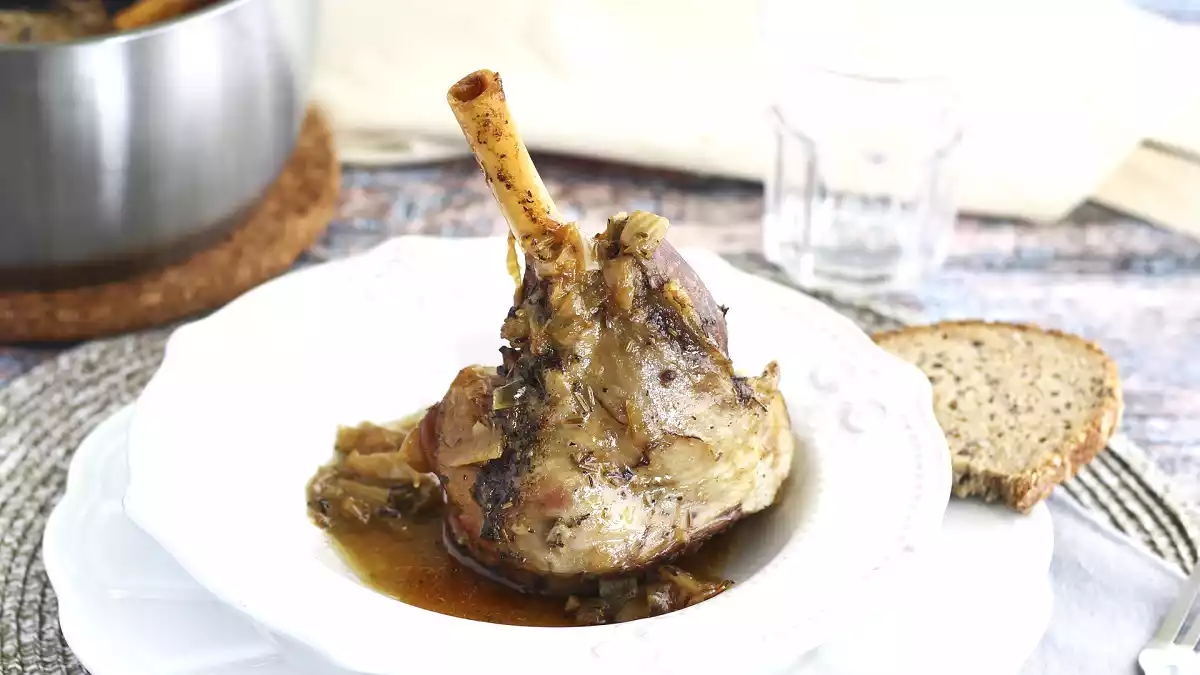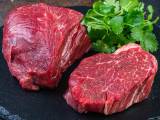How to cook lamb and not fail. Keys to make it tasty and juicy the first time.

Lamb requires respect, time and knowledge. Which cut to choose? How to cook it without fear? In this article we tell you everything: key pieces, tricks from great chefs and mistakes to avoid. Because when lamb is cooked well, it becomes a pure ritual.
It is not just any meat. There are meats that are associated with everyday life, with quick and unceremonious cooking. Lamb is not one of them. For centuries, its place has been at the center of the table when the occasion deserves it: religious celebrations, important family meals, wedding banquets or national festivities.
In much of the Mediterranean and Middle East, lamb is a symbol of hospitality and festivity. Moroccan tajine with prunes, slow-cooked with spices and dried fruits; Greek moussaka, where it melts with eggplant and béchamel; or Jordanian mansaf, served on thin bread and rice with dry yogurt sauce... are just a few examples that reveal the diversity of techniques and flavors that revolve around this meat. In Greece, Turkey, Morocco, India and Iran, lamb is not just a food: it is part of a culinary identity.
Despite its deep flavor and nutritional richness, lamb is still a meat that commands a certain respect in the kitchen. Which cut to choose? How to avoid dryness? Is it necessary to marinate it? In this article we will solve these and other doubts so that you can prepare lamb without fear and with success. We will talk about the most valued cuts, the tricks used by the great chefs and, of course, the most common mistakes when preparing it, so that next time you get a tasty dish that is just right.
Learn how to choose the right cut
For a dish to shine, it is not enough to follow a recipe to the letter: you have to know which part of the animal to use. In Spain, there are three cuts that reign in butcher shops, restaurants and private homes, especially when there is something to celebrate.
The leg, lean but tasty, is the undisputed star of roasts. Whole, boneless or chopped, it is perfect for the oven and accepts mild seasonings, such as garlic, rosemary or a good splash of white wine.
The shoulder is its juiciest cousin. Because it has more fat infiltrated, it is especially tender when cooked slowly. For many, there is no better option if you are looking for that mellow point that makes the meat detach itself from the bone.
The ribeye, presented whole as carré or in the form of chops, is ideal for quick and polished preparations. Grilled or pan-seared, it cooks in just a few minutes and is served with little more than a neat garnish.
And if we talk about stews and stews, there is a cut that never fails: the shank. Long cooking, low heat and patience: that is what this humble and tasty piece demands, which, when well worked, results in a tender and deeply aromatic meat.
How to cook lamb to perfection
There is no single way to cook lamb, but there is a silent consensus among the chefs who know it best: this noble and expressive meat needs respect. And that starts with understanding how it behaves in the kitchen, cut by cut.
One of the most repeated keys among professionals is to control the temperature. Large pieces, such as the leg or shoulder, are not rushed: they appreciate a slow and prolonged cooking that allows the fat to melt little by little and the meat to become tender, without losing juiciness. Chef Karlos Arguiñano sums it up bluntly: moderate oven, bone included and few ingredients. If the raw material is good, there is no need to complicate things.
For the more technical, such as Chef Martín Berasategui, double cooking offers an additional guarantee: first sealing the meat over high heat to create a flavorful crust and finishing in the oven, at low temperature, until it reaches the right point. This combination makes it possible to maintain juiciness without sacrificing the flavor of caramelization.
When the objective is to surprise, the deep flavor of the lamb requires a counterpoint. That is why some chefs, such as Dani García, resort to sweet and sour sauces, a reduction of vinegar and sugar, for example, or garnishes that provide acidity and freshness. The trick is to balance without covering up.
Others, like Chef Begoña Rodrigo, prefer to depart from the classic script: marinating the meat with yogurt, lemon juice or oriental spices, playing with fresh herbs and seasonings that soften the flavor without disguising it. Instead of masking the character of the lamb, the idea is to highlight it from a different angle.
And one last tip that is repeated in the kitchen: rest. Whether it's a pan-seared chop or a shoulder fresh from the oven, letting the meat rest for a few minutes before serving allows the juices to redistribute. It's not an incidental step: it's the one that makes the difference between a good dish and a truly memorable one.
Common mistakes when cooking lamb
As much respect as it commands, lamb is not a difficult meat if it is well understood. Even so, there are mistakes that are repeated, in professional and domestic kitchens, and that can ruin even the best raw material. Avoiding them is as important as mastering the recipe.
Confusing goatling and lamb
Although they are often confused, they are not the same. Goatling is the offspring of the goat, while lamb is the offspring of the sheep. The former is slaughtered very young (usually between 4 and 8 weeks), which gives it a paler, softer meat with a more delicate flavor. Lamb, on the other hand, can be slaughtered a little later and its meat, although also tender, has a deeper, fattier taste. In cooking, goatling lends itself to milder preparations and lamb withstands seasoning and longer cooking times.
Cooking in a hurry
Lamb needs time. Roasting a leg or shoulder in a hurry is a sure recipe for dry, tough meat. Cooking slowly and with the oven on low is key so that the fat melts little by little and the meat is tender and juicy.
Forgetting the bone
Often the meat is boned for ease of service, but it is worth cooking it on the bone. Not only does it add flavor, it also helps maintain juiciness, as it retains heat and protects the meat during cooking. In roasts and stews, leaving the bone in can make the difference between a dry dish and a really tasty one.
Overdoing it with aromatics
Lamb has character. Covering it with too many spices, strong wines or heavy sauces is like putting perfume on a bunch of mint: unnecessary and sometimes counterproductive. The balance is to highlight without overshadowing. That said, not all cuts are treated equally. Noble cuts, such as leg or shoulder, appreciate simple preparations that respect their deep flavor. On the other hand, humbler or thinner cuts, such as chops or chopped leg, can benefit from marinades with yogurt, citrus or spices that enhance their texture and bring freshness without masking their essence.
Not letting it rest
This is one of the most frequent mistakes. Taking it out of the oven and serving it immediately prevents the juices from redistributing, which directly affects the texture. A few minutes of rest, well covered and away from direct heat, make all the difference.
Poorly chosen cuts for specific preparations
Trying to make a stew with chops or roast a shank in a hurry only leads to frustration. Each piece has its function, and knowing them (as we have already seen) is the first step to enjoying lamb without fear.
How about you?
Do you usually prepare lamb at home or do you reserve it for special occasions? Are you more of a baked leg of lamb with rosemary or slow stews that cook themselves? Maybe you have a favorite cut or a foolproof trick to make sure it's always just right.
Tell us how you cook it: do you marinate the meat first, do you prefer the bone or do you debone it, are you one of those who let it rest religiously before serving? We would love to read you in the comments and discover new ways to enjoy this meat that, well done, never disappoints.
You may also be interested in:
 Patricia González
Patricia González
